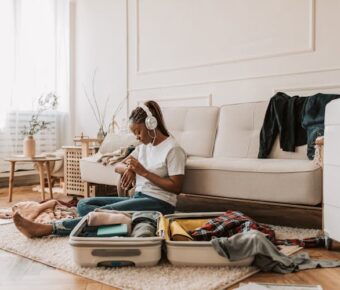
Carry On vs Personal Item Difference Airlines: 2025 Guide to Baggage Rules & Smart Packing
Ever stood at the gate and watched someone get stopped because their “personal item” was actually a small suitcase? It’s surprisingly common. Airlines draw a line between the two, but honestly, that line can feel invisible until you’re right there at check-in.
A carry-on is bigger and belongs in the overhead bin. A personal item is smaller and must fit under the seat in front of you. Seems simple, but it’s not always clear in practice.
Here’s the catch—every airline has its own rules. I’ve flown routes where my backpack counted as a carry-on, and other times, that same bag slid by as a personal item.
Knowing the difference before you pack can spare you some stress, time, and those surprise fees that always sting.
Table of Contents
- Key Takeaways
- Carry-On vs Personal Item: Core Differences
- Definition and Purpose of Each
- Where Each Bag Is Stored Onboard
- Common Examples: Suitcases, Backpacks, Purses
- Airline Policies: What Counts as Carry-On and Personal Item
- Major U.S. Airlines: American, Delta, United, Southwest
- International Airlines: Key Differences
- Budget Airlines: Strict Rules and Fees
- Size and Dimension Limits Explained
- Standard Carry-On Dimensions and Linear Inches
- Personal Item Size Limits by Airline
- Weight Restrictions and Overages
- Best Bag Types for Each Category
- Choosing the Right Carry-On Luggage
- Ideal Personal Item Bags: Backpacks, Laptop Bags, Briefcases
- Pros and Cons of Each Bag Type
- Packing Strategies and Expert Tips
- Maximizing Space in Carry-Ons
- Smart Packing for Personal Items
- What to Pack Where: Essentials vs Extras
- Handling Baggage at the Airport
- Gate-Checking: When and Why
- Avoiding Baggage Claim Delays
- Upgrading or Adding Checked Bags
- Frequently Asked Questions
- What are the typical size and weight restrictions for personal items on major airlines?
- How do airline policies differ regarding carry-on luggage and personal items?
- Can you provide tips for maximizing space in a personal item while adhering to airline regulations?
- What are the consequences of exceeding the size limit for a personal item on a flight?
- How do budget airlines’ carry-on and personal item rules vary from traditional carriers?
- What essential items are recommended to pack in a personal item for a comfortable flight?
- Book Your Dream Experience
- More Travel Guides
Key Takeaways
- Carry-on bags go overhead; personal items live under your seat
- Size and weight rules shift by airline and even by route
- Picking the right bag and packing smart saves you money and hassle

Carry-On vs Personal Item: Core Differences
Airlines treat carry-ons and personal items as totally separate things, and the rules change fast depending on the carrier. The big differences are size, where you stash the bag, and what you’re likely to pack in each.
If you get these basics down, you’ll sidestep those last-minute bag checks and surprise charges at the gate.
Definition and Purpose of Each
A carry-on is your main hand luggage. It’s bigger than a personal item and holds most of your cabin stuff. Honestly, think of it as your tiny suitcase—clothes, shoes, maybe even a jacket you don’t want to wear on the plane.
A personal item is smaller and designed for things you want within arm’s reach. That’s your laptop, wallet, snacks, medication, or maybe a book you’ll actually finish this time.
Most airlines let you bring both, unless you’re flying basic economy or a barebones budget fare. Some budget airlines only let you bring a personal item for free and charge extra for a carry-on. That catches a lot of people off guard.
If you’re traveling light, you might just bring a larger personal item (within the size limit) and skip the carry-on. I do this for short trips and it makes life so much easier.
Where Each Bag Is Stored Onboard
You’ll stash your carry-on in the overhead bin above your seat. That’s why airlines set a strict size limit—usually around 22 x 14 x 9 inches in the U.S.
Overhead space fills up quickly, especially on packed flights. If you can, board early to snag room for your bag.
Your personal item must always slide under the seat in front of you. That’s the non-negotiable rule. Most airlines use dimensions like 18 x 14 x 8 inches, but it’s not universal.
If your bag doesn’t fit, the crew will ask you to put it overhead. That gets annoying fast if you need to grab something mid-flight.
Under-seat space can be tight, especially in bulkhead or exit rows. I’ve squeezed a bag in before only to find the seat frame made it almost impossible—definitely check your seat type before you pack.
Common Examples: Suitcases, Backpacks, Purses
Carry-on examples:
- Rolling cabin suitcase
- Large travel backpack (think hiking style)
- Small duffel bag
Personal item examples:
- Purse or handbag
- Laptop bag or slim briefcase
- Small backpack or weekender
A small backpack can be a personal item or a carry-on—it all depends on size. Same goes for duffels: if it fits under the seat, you’re good.
If you’re carrying both, keep your valuables and in-flight essentials in your personal item. That way, if you have to gate-check your carry-on, you’re not scrambling to reorganize at the last second.
Some travelers swear by a “tote + packing cube” combo for their personal item. You can keep things organized and still slide it under the seat. It sounds minor, but it’s a game-changer for long flights.
Airline Policies: What Counts as Carry-On and Personal Item
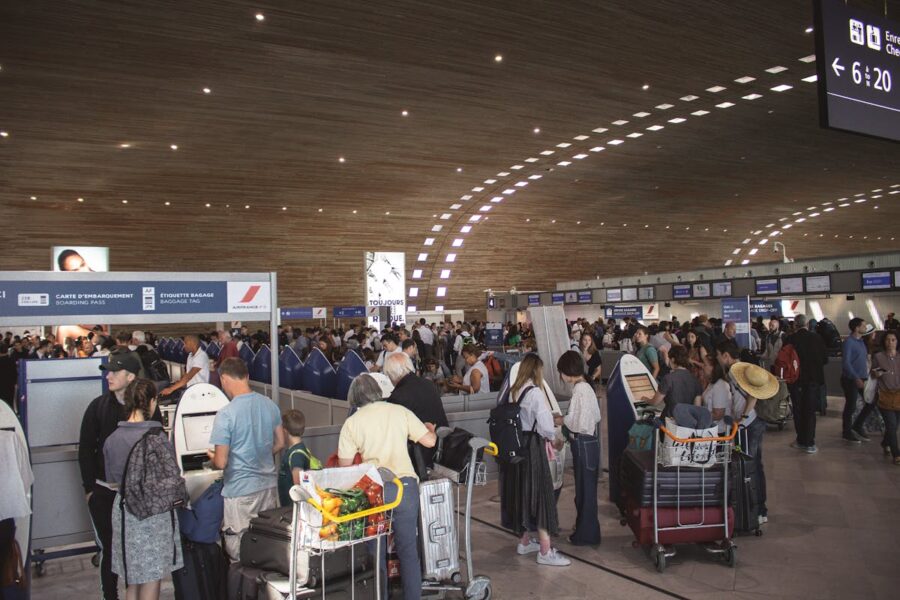
Airlines don’t play by the same rules with carry-on allowance. Some are generous, letting you bring both a carry-on and a personal item. Others get stingy, with strict size limits or extra fees.
If you know exactly what counts as each, you’ll avoid those awkward moments at the gate—and save cash.
Major U.S. Airlines: American, Delta, United, Southwest
On American Airlines, your carry-on can be up to 22 x 14 x 9 inches. You also get a personal item up to 18 x 14 x 8 inches, as long as it fits under the seat. Diaper bags and medical gear don’t count against your limit.
Delta is a little loose with personal item sizes. They don’t give exact numbers, just examples—purse, briefcase, or small backpack. If it fits under the seat, you’re set.
United matches American’s carry-on size limit, but basic economy only includes a personal item unless you’re eligible for an exception. That’s a classic “gotcha” for bargain hunters.
Southwest is the most generous. Carry-ons can be 24 x 16 x 10 inches, and personal items get a little extra room at 18.5 x 13.5 x 8.5 inches. Pets in carriers count as either your carry-on or personal item.
International Airlines: Key Differences
International airlines love to add weight limits on top of size rules. This can trip up U.S. travelers who aren’t used to it.
British Airways allows a 22 x 18 x 10-inch carry-on and a personal item up to 16 x 12 x 6 inches, but both together can weigh up to 51 pounds.
Air France combines the weight for both bags—26 pounds total. Cathay Pacific limits carry-ons to 15 pounds, so you can’t just cram everything in and hope for the best.
Some airlines, like Singapore Airlines, use total linear inches instead of individual measurements. Others, like Ryanair, change the allowance if you pay for priority boarding.
If you’re flying abroad, check the rules before you pack—or even before you book your ticket. Limits can be way stricter than you’d expect.
Budget Airlines: Strict Rules and Fees
Budget carriers make their money on bag fees, so they enforce the rules to the letter. Spirit Airlines gives you one free personal item (18 x 14 x 8 inches). Anything bigger is a carry-on and costs extra—sometimes more than your seat.
Allegiant does something similar: personal items up to 16 x 15 x 7 inches are free, but carry-ons cost $15 to $75, depending on when you pay.
Frontier allows a free personal item at 18 x 14 x 8 inches. Carry-ons cost extra, and they’re quick to measure bags at the gate.
When I fly budget, I pack light and stick to the personal item size. I’ve done weekend trips with just a soft-sided backpack that fit under the seat, and it saved me both money and a lot of hassle. If you can manage this, you’ll actually get those cheap fares you see online.
Size and Dimension Limits Explained
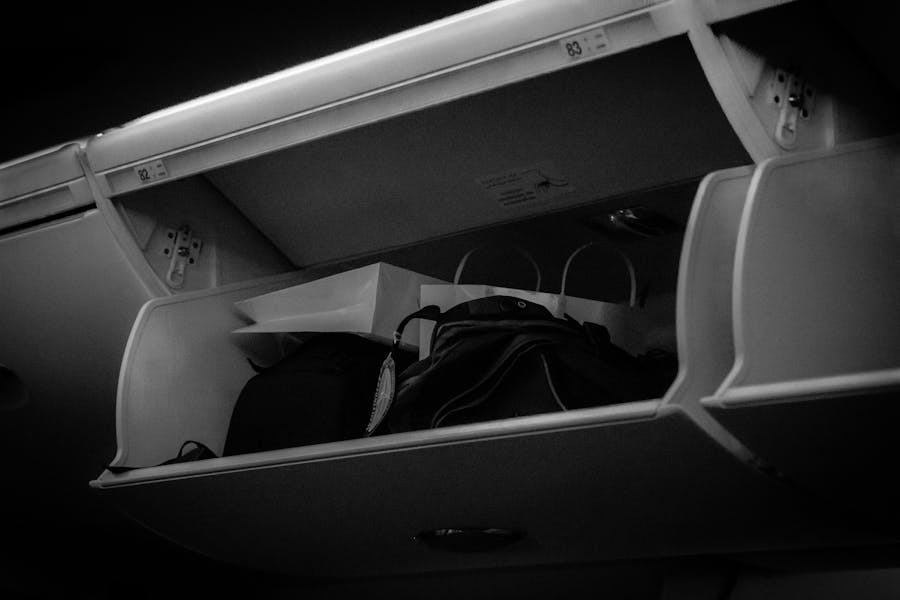
When you’re packing for a flight, the size of your carry-on and personal item can make or break your trip. Airlines measure these limits precisely, and even a small overage can mean extra fees or checking your bag at the gate.
Standard Carry-On Dimensions and Linear Inches
Most airlines cap carry-on suitcases at 22 x 14 x 9 inches (length x width x height), including wheels and handles. Some, like Southwest, give you a little extra space, but budget and international airlines sometimes go smaller.
You’ll also see linear inches—that’s length + width + height. For example, a 22 x 14 x 9 bag equals 45 linear inches. Airlines use this for certain bags, especially if your bag isn’t a standard shape.
If you’re shopping for a new carry-on, double-check the specs before you buy. I’ve bought “carry-on” bags before that were too big for stricter airlines. At the gate, that metal sizer box doesn’t care about your receipt.
Personal Item Size Limits by Airline
A personal item is smaller than a carry-on and must fit under the seat. Think laptop bag, slim backpack, or tote—not your rolling suitcase.
Here’s a quick cheat sheet:
| Airline | Max Size (inches) | Notes |
|---|---|---|
| American | 18 x 14 x 8 | Must fit fully under seat |
| Delta | Not specified | Should be purse/laptop size |
| JetBlue | 17 x 13 x 8 | Duty-free allowed |
| Southwest | 18.5 x 13.5 x 8.5 | Assistive devices extra |
| Allegiant | 16 x 15 x 7 | Free with all fares |
Some airlines skip exact dimensions, but don’t get cocky. If your bag looks oversized or bulges out, a flight attendant might make you put it overhead. On basic economy, that could mean a fee.
Weight Restrictions and Overages
In the U.S., most airlines don’t bother with weight limits for carry-ons or personal items. But fly internationally, and it’s a different story.
Many Asian and European carriers cap carry-on weight between 15 and 22 pounds—sometimes for both your bags combined.
I’ve been caught in Tokyo and Paris where they actually weigh your cabin bags at check-in. Even if it fits the sizer, if it’s too heavy, you’ll pay to check it. No arguing your way out of it.
If you’re traveling abroad, always look up your airline’s baggage policy before you pack. If you’re close to the limit, try wearing heavier items or shifting weight into your personal item. Just don’t overstuff it—if it no longer fits under the seat, you’ll run into trouble.
Best Bag Types for Each Category

Airlines set strict size limits, but the right bag makes your trip smoother. The style, material, and layout matter more than you think.
Choosing the Right Carry-On Luggage
Carry-ons go overhead, so pick something light but durable. Most travelers love a small rolling suitcase with a hard shell—it protects your stuff and slides right into the bin.
Soft-sided carry-ons give you a little more wiggle room if you overpack, but they don’t protect as well. I’ll admit, spinner wheels have saved me more than once—being able to wheel your bag sideways through a crowd is underrated.
If you want flexibility, go for a travel backpack that meets carry-on dimensions. It’s easier to haul up stairs or across bumpy streets, and some open like a suitcase for easy packing. There are tons of clever options out there if you’re browsing for travel gear.
Ideal Personal Item Bags: Backpacks, Laptop Bags, Briefcases
Your personal item has to squeeze under the seat in front of you, so forget about style for a second—size and shape really do matter. I usually grab a compact backpack because it swallows a laptop, snacks, and a spare shirt without puffing up like a balloon.
If you’re hitting the road for work, laptop bags make a lot of sense. They keep your tech padded and sorted, though you won’t fit much else. I’ll use one for quick trips when I don’t need more than the basics.
A slim briefcase? It’s a classic for business travel if you just need documents or a tablet. Just remember, you’ll barely have room for a sweater or water bottle, so it’s not ideal for the over-packers among us.
Pros and Cons of Each Bag Type
Carry-on suitcase
- Pros: Keeps your stuff protected, rolls easily, usually fits those airline sizers
- Cons: Gets awkward on cobblestones or stairs, can feel heavy overhead
Travel backpack
- Pros: Leaves your hands free, packs flexibly, great for mixed transport days
- Cons: Puts the weight on your back, doesn’t shield fragile items much
Laptop bag / briefcase
- Pros: Looks sharp, keeps things organized, lightweight
- Cons: Space is tight, not great for chunky items
Honestly, matching your bag to your trip makes all the difference. If you’re bouncing between trains and planes, the backpack wins for me. If it’s a conference run, a sleek carry-on suitcase plus a laptop bag works every time.
Packing Strategies and Expert Tips
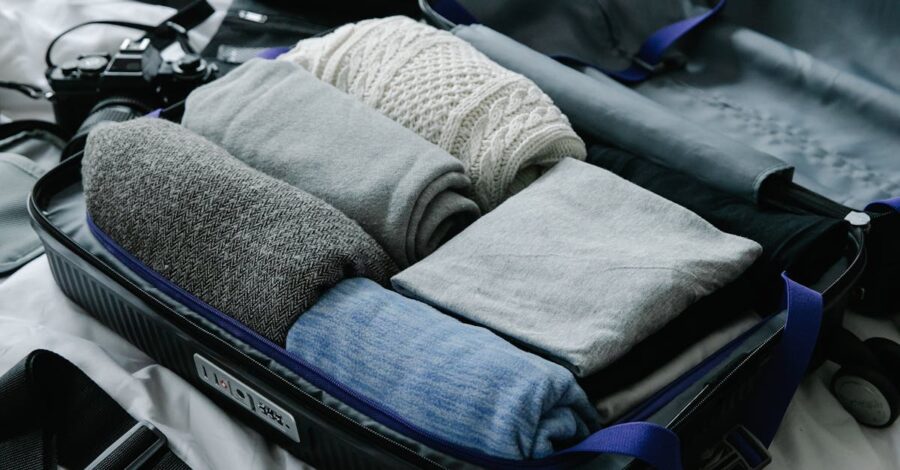
Airline size limits can be a headache, but you’d be surprised how much you can squeeze in with the right approach. I always focus on arranging my stuff so I can grab what I need fast, balance the weight, and still dodge those dreaded rule violations.
Maximizing Space in Carry-Ons
Treat your carry-on like a game of Tetris. Every inch counts. Rolling clothes—especially soft tees and jeans—actually does create more room. I swear by packing cubes; they keep similar things together and stop your bag from exploding when you pull something out.
I like to put heavier things, like shoes or toiletries, by the wheels so the bag stands up straight. Shoes? Stuff them with socks or chargers. No wasted space.
Outer pockets are gold for slim-but-bulky stuff—a jacket or an umbrella can live there instead of hogging space inside. And if your airline lets you, wear your clunkiest shoes and layers on the flight. Not exactly high fashion, but you’ll thank yourself later.
Smart Packing for Personal Items
Your personal item is your in-flight survival kit. I always go for a backpack or tote with lots of compartments so I can separate the must-haves from the just-in-case stuff.
My laptop rides in its own padded sleeve—makes security lines less painful. I keep snacks, an empty water bottle, and a tiny toiletries pouch in spots I can reach without a scavenger hunt.
If I’m using a backpack, I stack things by when I’ll need them. Passport and boarding pass on top, then headphones, then the book or tablet. Saves you from elbowing your neighbor every time you need something mid-flight.
What to Pack Where: Essentials vs Extras
Here’s my rule: carry-on = extras, personal item = essentials. Essentials are those things you’d panic to lose or need before landing—passport, meds, wallet, electronics, chargers, anything valuable.
Toss clothes, shoes, and less urgent toiletries in your carry-on. But always stash a change of clothes in your personal item. If your carry-on gets gate-checked, you’re covered.
Quick cheat sheet:
| Carry-On | Personal Item |
|---|---|
| Bulk clothing | Passport & ID |
| Shoes | Medications |
| Backup toiletries | Laptop/tablet |
| Gifts/souvenirs | Chargers & cables |
| Outerwear | Snacks & water bottle |
If you pack this way, you’ll always have the crucial stuff at arm’s reach—even if your other bag goes on a little adventure of its own.
Handling Baggage at the Airport
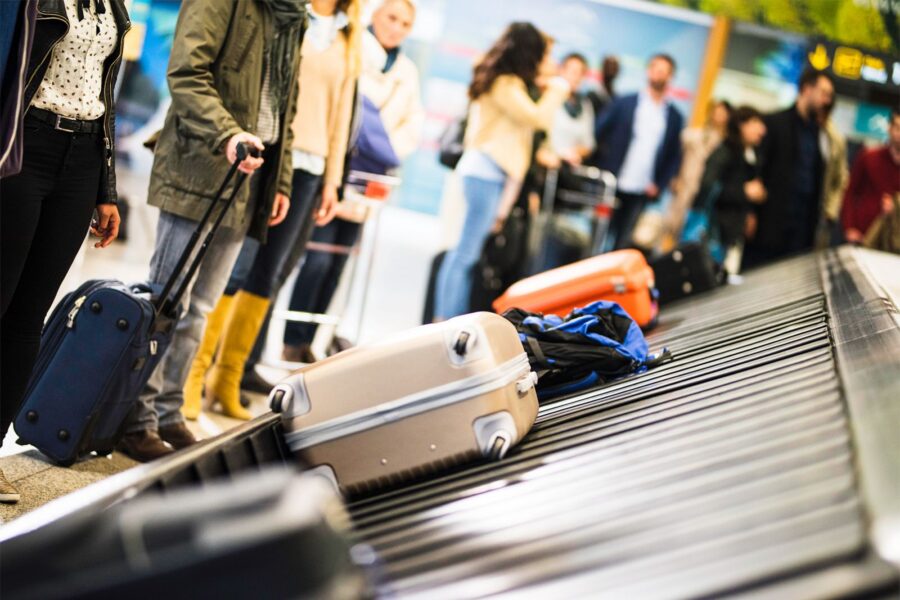
Airports have their own rhythm, and baggage rules are just part of the dance. I always keep an eye out for when my carry-on might get snatched at the gate, how to skip baggage claim limbo, and how to wrangle my checked bag allowance if plans change last minute.
Gate-Checking: When and Why
Gate-checking pops up when overhead bins fill up before everyone boards. Tiny regional planes are notorious for this; their bins just can’t handle standard carry-ons.
If you board late, your odds of gate-checking shoot up. Paying for priority boarding or having elite status helps you keep your bag with you.
Sometimes gate agents beg for volunteers to check carry-ons for free to speed things up. If you don’t need your bag till baggage claim, it’s not a bad deal. Gate-checked bags still end up with the checked luggage, so budget extra time after landing.
I’ve had flights where my bag beat me to the carousel, and others where I waited ages. When I have a tight connection, I keep all essentials in my personal item—just in case.
Avoiding Baggage Claim Delays
Baggage claim can really eat up your time. Traveling with just a carry-on and personal item is the simplest way to dodge it—assuming your airline allows both.
If you have to check a bag, mark it with something bright. I once tied a neon shoelace on mine after grabbing the wrong black suitcase—never again.
Standing close to where the bags come out gives you a better shot at grabbing yours fast. Got hours before check-in or a long layover? Luggage storage is a lifesaver—you can explore without dragging your stuff everywhere.
Always check the baggage tag at drop-off. One wrong airport code and your suitcase could end up somewhere you definitely aren’t going.
Upgrading or Adding Checked Bags
Sometimes you realize at the airport that one checked bag isn’t enough. Buying extra allowance online before you get there almost always costs less than paying at the counter.
If your bag tips the scale, shuffle things into your carry-on or personal item to dodge overweight fees. Most airlines have scales near check-in so you can repack before you hit the desk.
When I bring back souvenirs or bulky winter stuff, I’ll pay for a second checked bag instead of risking a broken zipper. Not glamorous, but still cheaper than replacing luggage on the fly.
And if you’re flying basic economy, sometimes a checked bag is the only way to bring more than a tiny personal item. Plan ahead, or you’ll end up stuck at the counter.
Frequently Asked Questions
Airlines love their own rules. What you can bring on board, size limits, weight restrictions—it all varies. I’ve dodged extra fees and last-minute panic just by knowing where the differences are.
What are the typical size and weight restrictions for personal items on major airlines?
Most airlines want your personal item to fit under the seat. The usual size limit is around 18 x 14 x 8 inches (45 x 35 x 20 cm), but some allow a bit more or less.
U.S. airlines rarely weigh personal items, but international ones sometimes do. If your bag looks suspiciously heavy, they might check it—but honestly, it’s rare.
How do airline policies differ regarding carry-on luggage and personal items?
Carry-ons go overhead, personal items go under the seat. Many U.S. airlines allow up to 22 x 14 x 9 inches for carry-ons, though it’s not universal.
Some airlines barely glance at your bag, others break out the measuring frame for everyone. It’s a bit of a gamble each time.
Can you provide tips for maximizing space in a personal item while adhering to airline regulations?
Use a soft-sided bag—it squishes into tight spots better than a hard one. Packing cubes and rolling clothes help you fit more.
I always stash little things like chargers and snacks in side pockets for easy access. No digging required.
What are the consequences of exceeding the size limit for a personal item on a flight?
If your personal item’s too big, the airline might force you to check it. That can mean extra fees. Sometimes you can swap it with your carry-on if that fits under the seat, but don’t count on it.
I’ve watched people scramble to gate-check their “personal item” at the last minute. Stressful, especially if you’ve got valuables inside.
How do budget airlines’ carry-on and personal item rules vary from traditional carriers?
Budget airlines are strict—sometimes painfully so. Many only let you bring a personal item for free, and charge for carry-ons.
The size limits are usually smaller, too. That “underseat backpack” from a major airline might not fly here. I learned the hard way with a low-cost carrier in Europe—my bag fees nearly matched the ticket price.
What essential items are recommended to pack in a personal item for a comfortable flight?
I always stash my passport, wallet, phone, and boarding pass right where I can grab them. If you don’t already, toss in a refillable water bottle—just fill it up after security.
A light sweater? Absolutely. Cabins get chilly, and those airline blankets sometimes feel more like napkins. I’d say bring snacks too; you never really know what you’ll get on board, and sometimes you just want your own favorites.
Noise-canceling headphones or even simple earplugs make a world of difference, especially on red-eyes or if you’re seated near, well, chatty neighbors. I never skip a small toiletry kit: hand sanitizer, lip balm, maybe a mini toothbrush if it’s a longer haul.
Honestly, a few thoughtful extras can turn a cramped flight into something almost pleasant—at least as pleasant as 35,000 feet gets.



